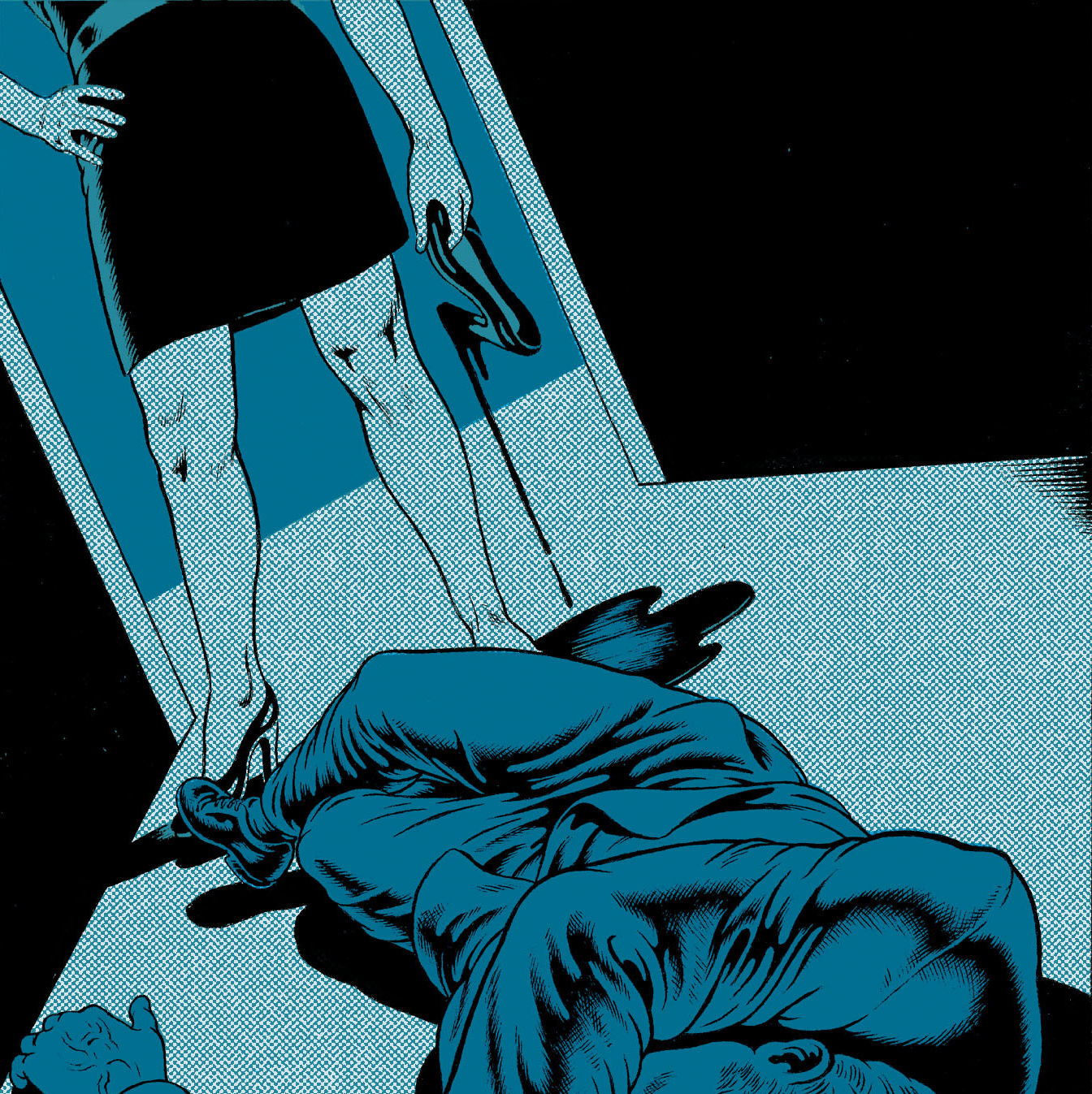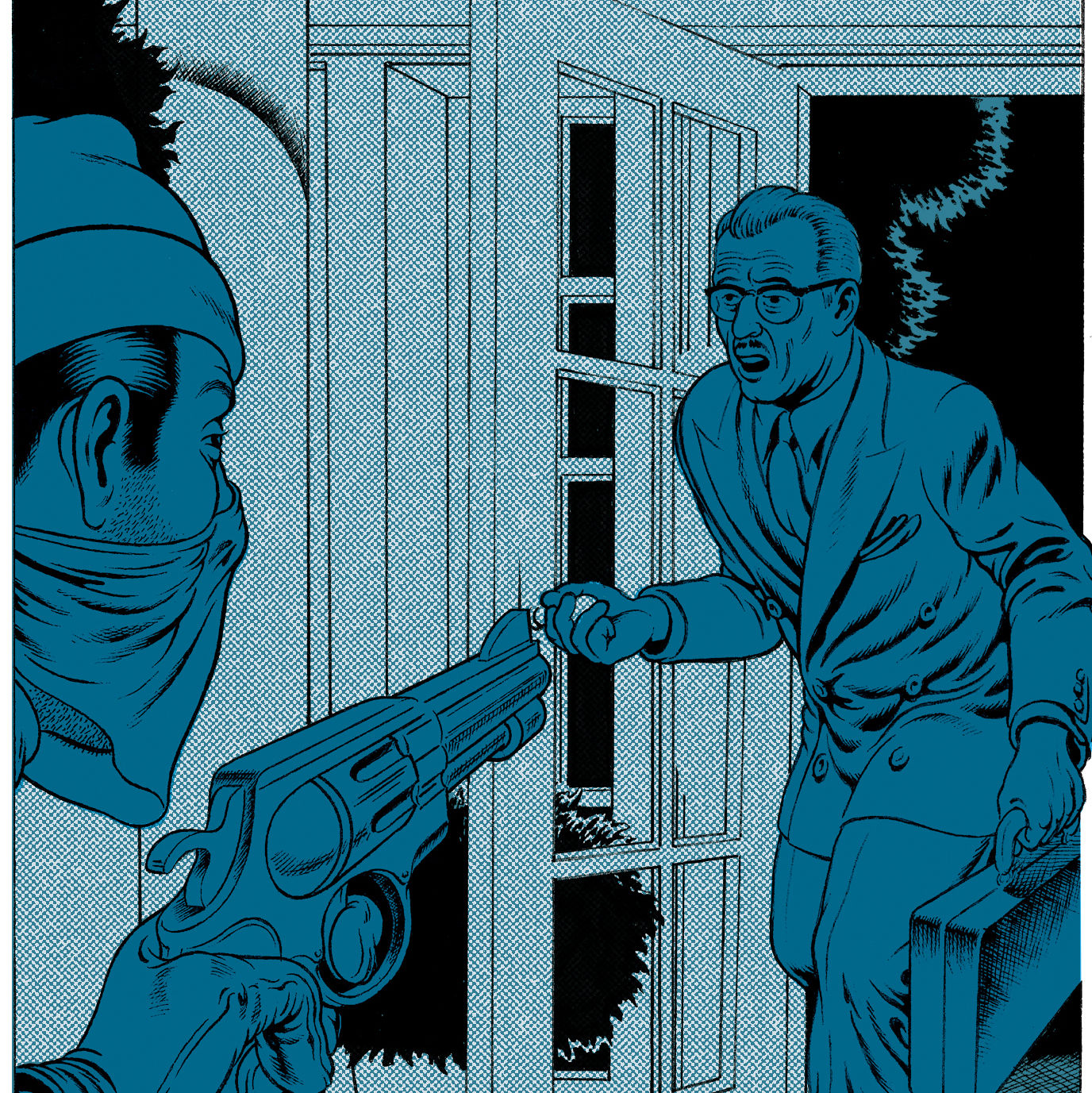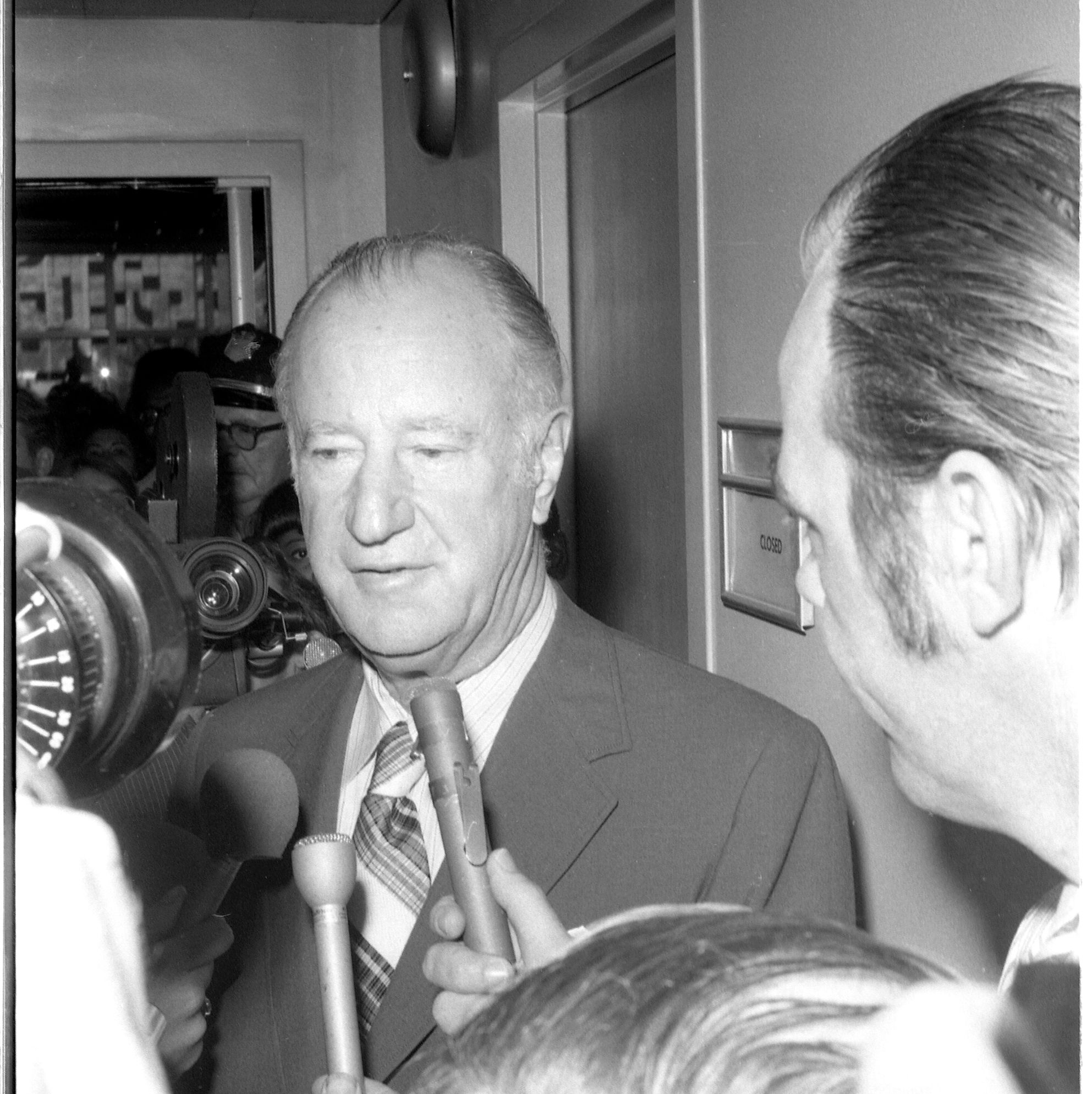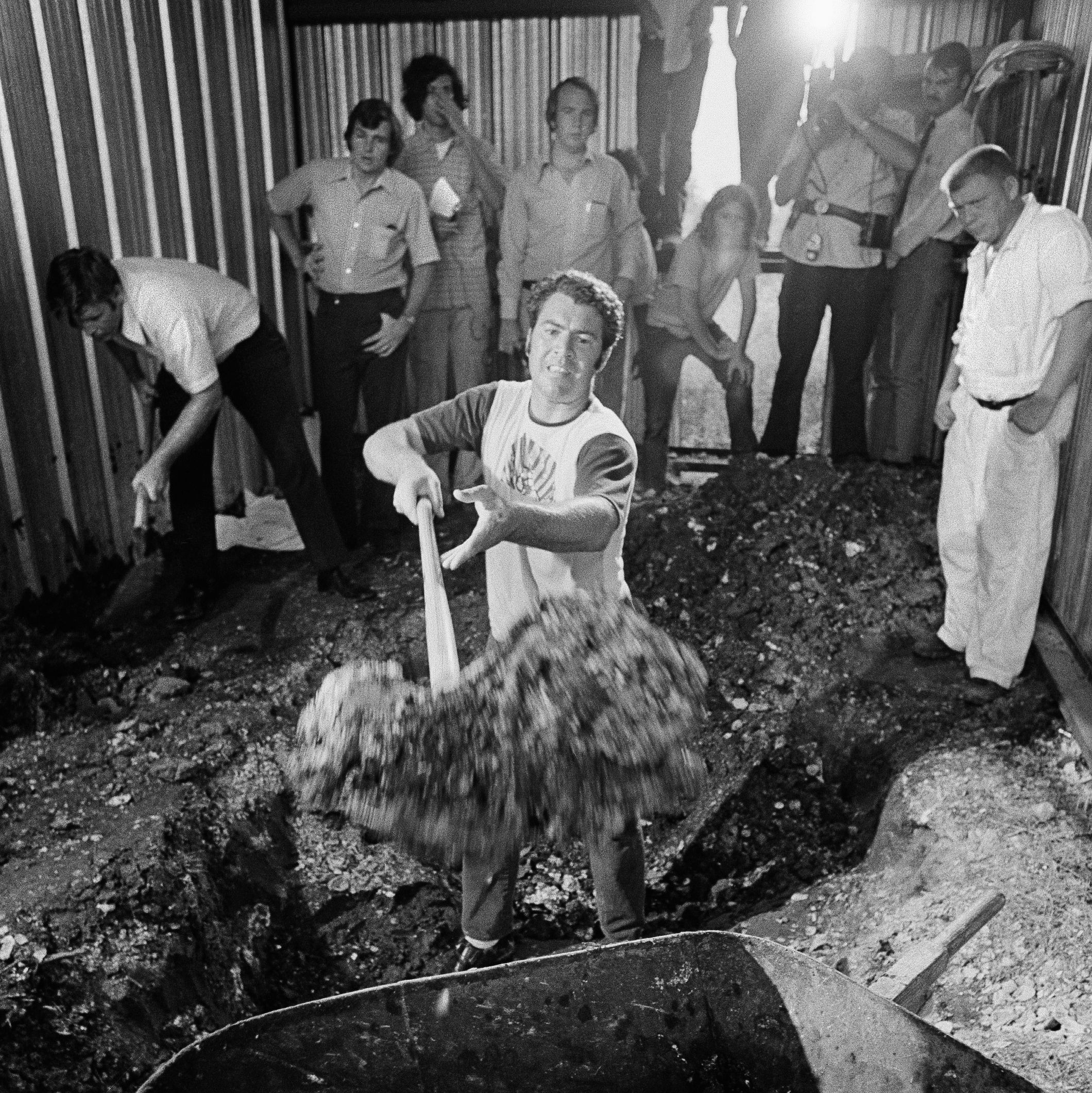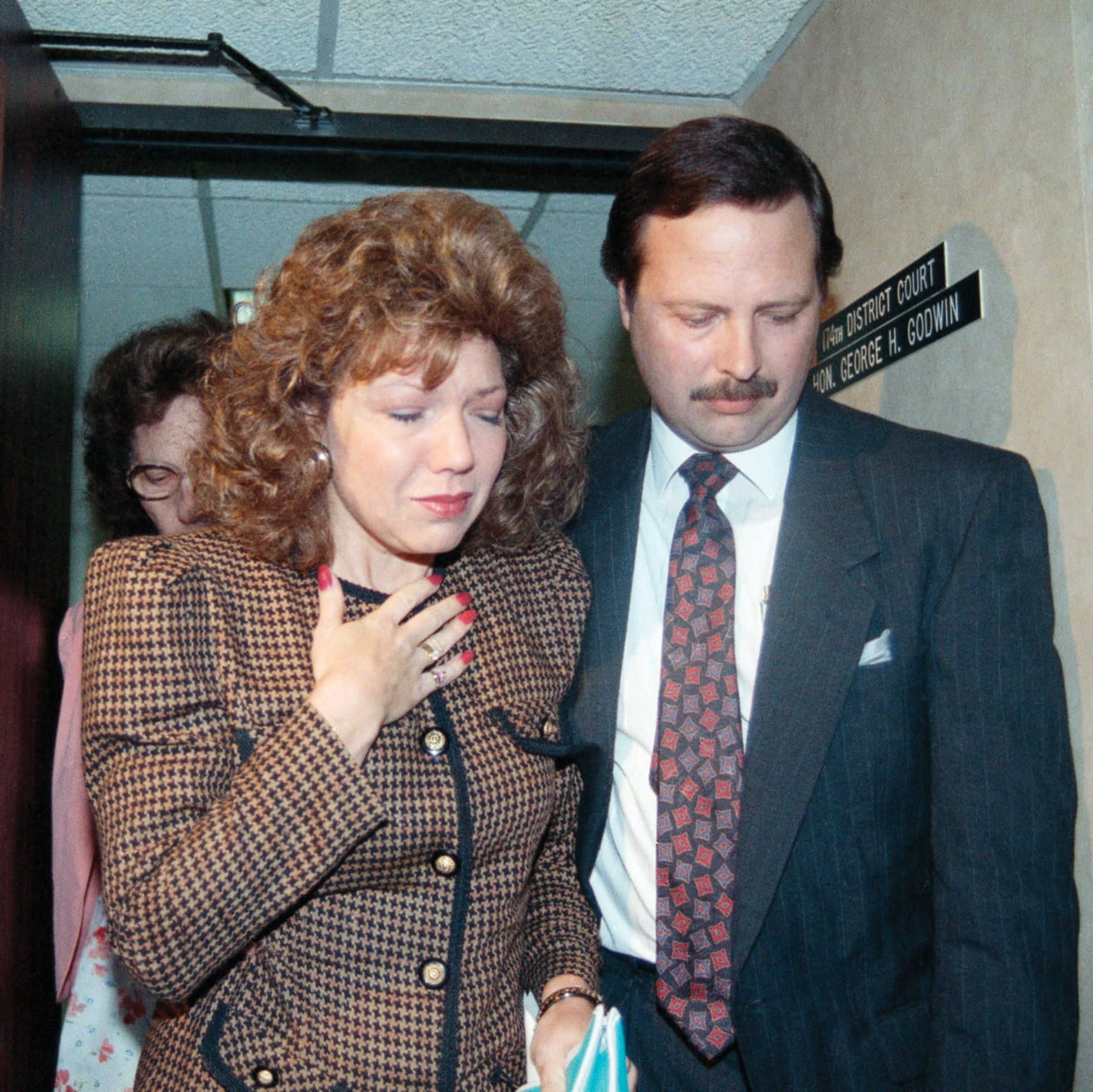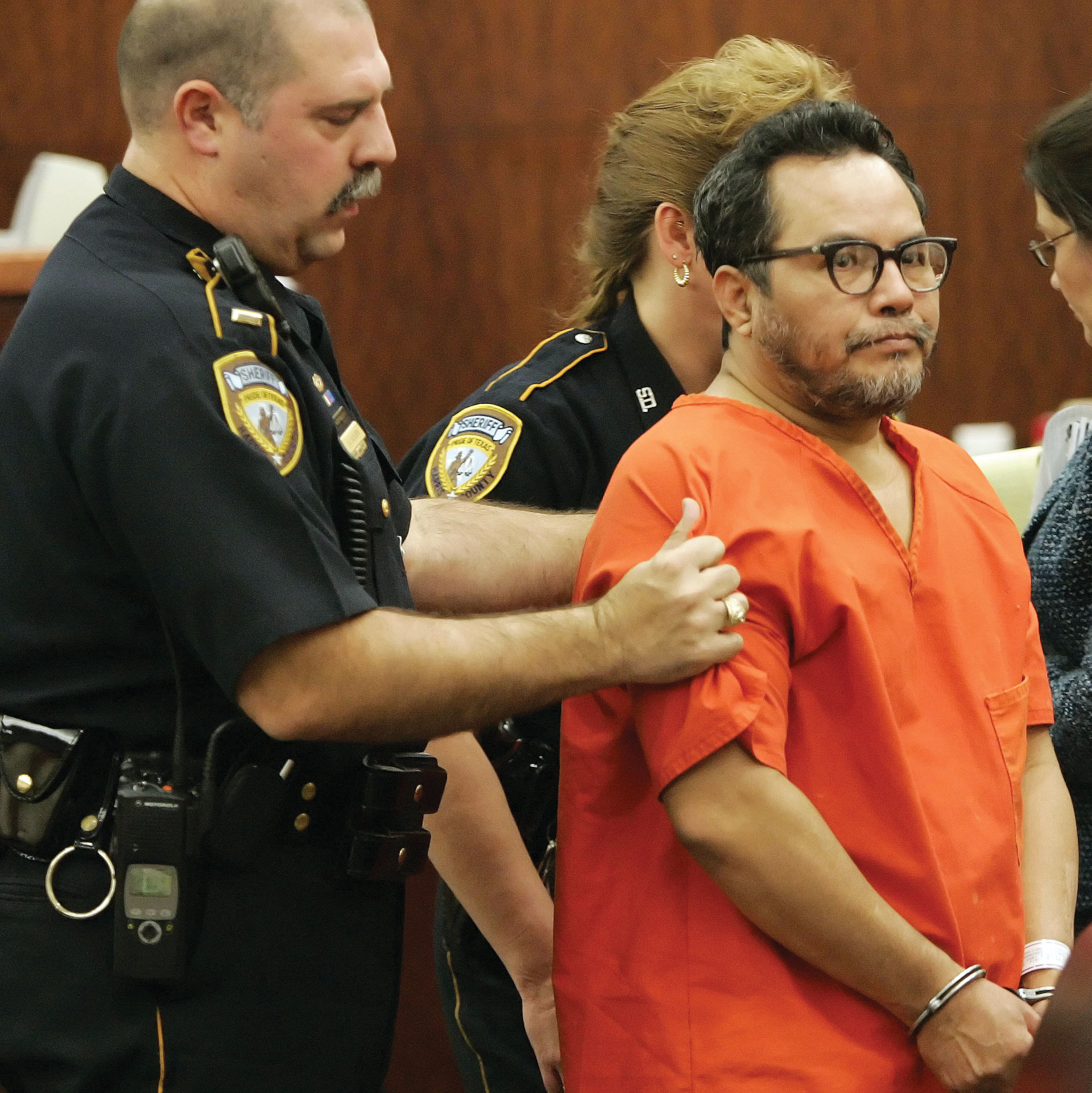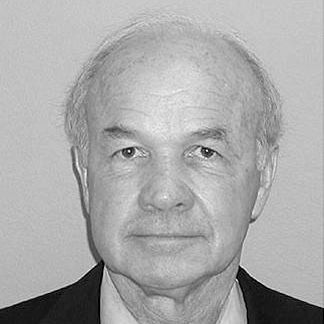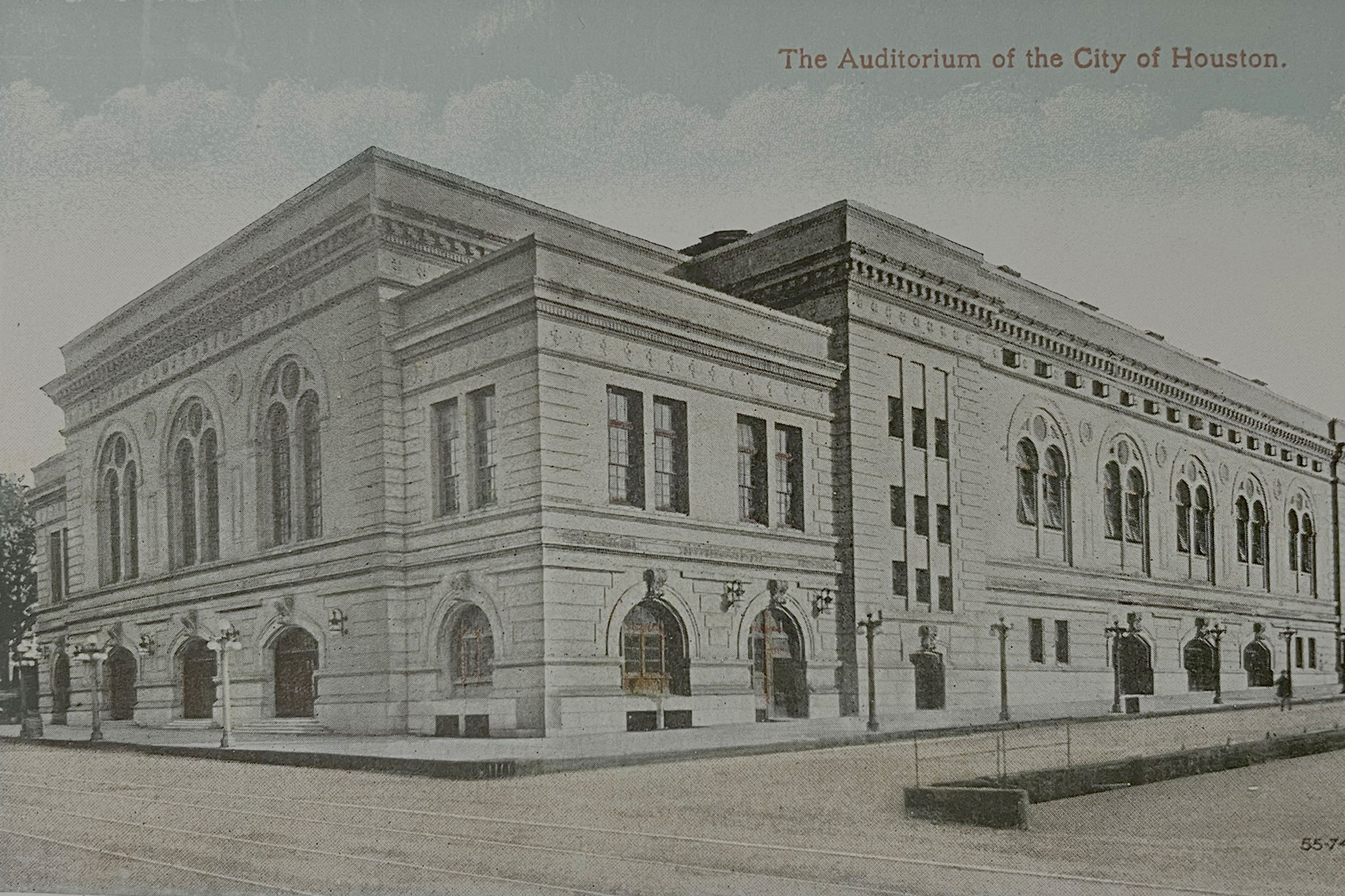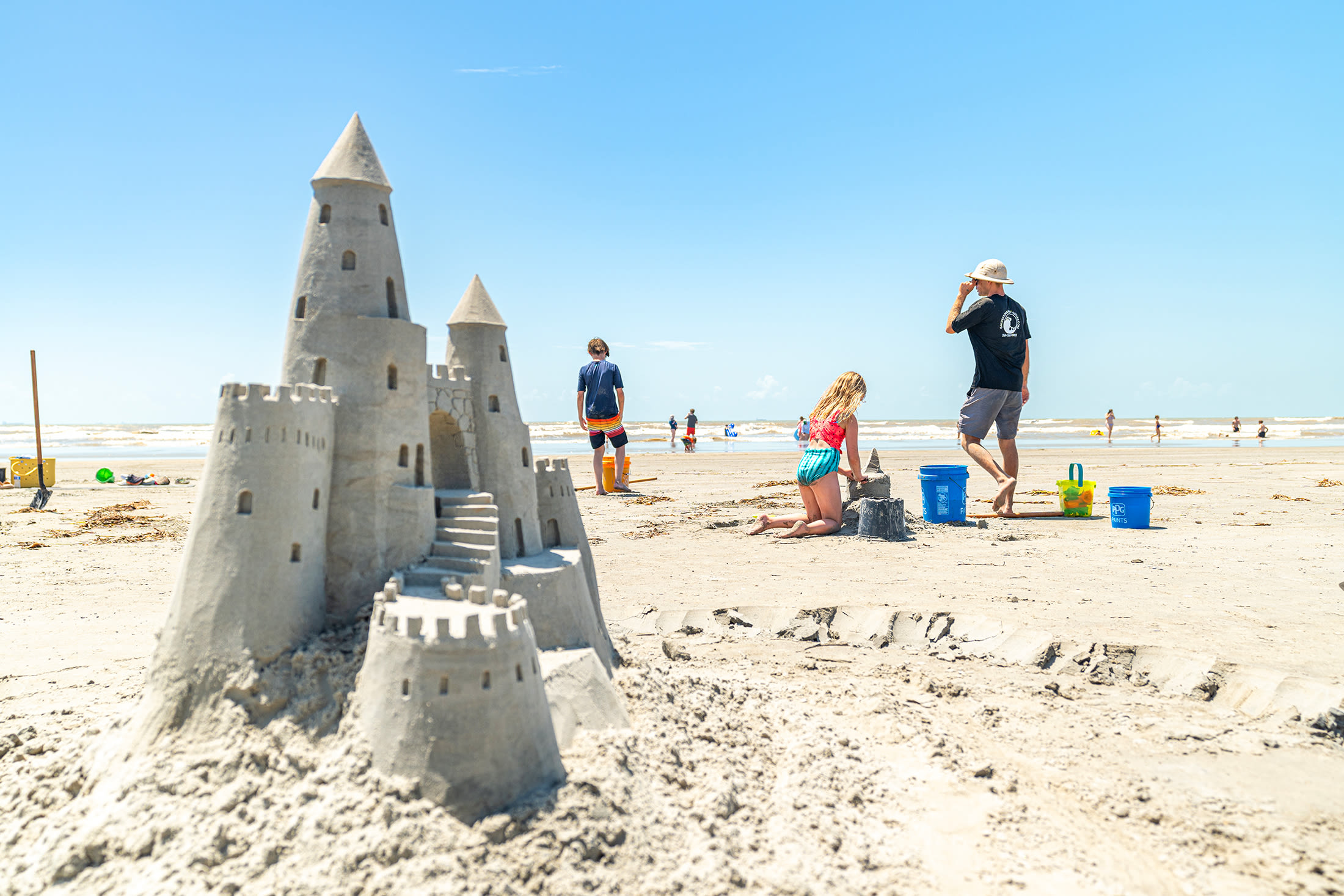It Comes to a Head: When Robert Durst Washed Up in Galveston
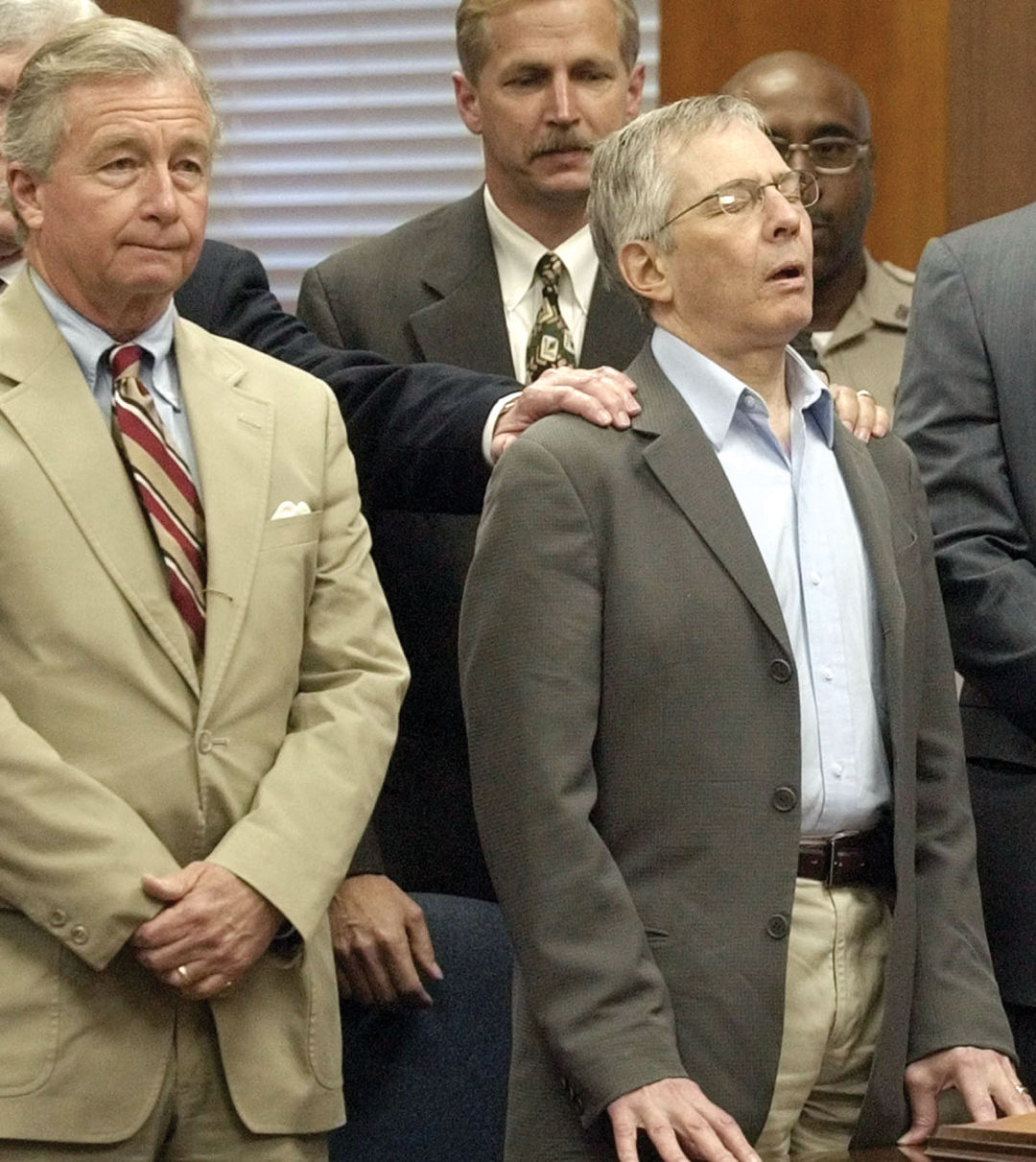
Surrounded by his attorneys, including Houston defense attorney Dick DeGuerin (left), multi-millionaire defendant Robert Durst (front right) was found not-guilty in November 2003, in Galveston, Texas. The son of a New York City real estate tycoon, he was accused of murder for killing a neighbor at a low-rent Galveston apartment house where they both lived, then dismembering the victim and throwing the body parts into Galveston Bay.
Image: AP Photo/Pat Sullivan
Disguised as a mute woman, Robert Durst arrived in Galveston in April 2000. At 58 he’d already been tied to, but was never charged for, the disappearance of his wife, Kathie Durst, in New York and the murder of his friend Susan Berman in California. It wasn’t long before the horrors that seemed to follow the wealthy New York real estate heir popped up in Texas—this time, in black garbage bags.
In September 2001, five of them were discovered floating in Galveston Bay, containing arms, legs, and a torso belonging to Durst’s 71-year-old neighbor, Morris Black. A sixth, found empty, presumably had stored Black’s head.
A year later, Durst, charged with murder, would explain to a jury—and the nation—his version of events. With famed Houston defense attorney Dick DeGuerin at his side, he admitted to cutting up Black, but maintained he’d done so only in self-defense. Seriously. “I did not kill my best friend,” he said. “I did dismember him.” The defense team painted Black as a cantankerous, questionable character who had formed a close friendship with Durst over a shared interest in guns.
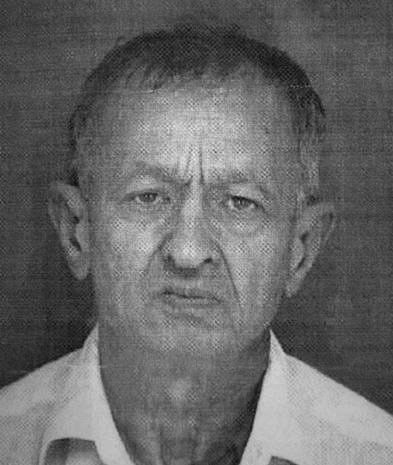
Morris Black, the friend that Durst insisted he had dismembered but had not murdered.
Image: Galveston County Court
On the night of September 28, 2001, the team explained, Durst had come home to his apartment to find his friend there waiting for him, pointing a gun his way. The two had recently argued. Durst tried to wrestle the gun away from Black, resulting in the bruises found on Black’s body. As they fell to the ground, the gun went off, the bullet fatally striking Black in his head, which was never found.
Then, Durst explained, he panicked. Certain that police wouldn’t believe his explanation, he meticulously sliced Black’s body apart with a bow saw and an axe to make it easier to hide. “I remember blood everywhere,” he said. “I remember like I was looking down on something and I was swimming in blood.” Nevertheless, the defense contended, he wasn’t guilty of murder.
“You don’t butcher somebody, put him in pieces, bag him up, dump him in the bay, because there’s an accident,” District Attorney Joel Bennett argued. But the jury wasn’t convinced beyond a reasonable doubt that Durst
had intentionally murdered Black. Though prosecutors from New York to Los Angeles had been certain the Galveston case would be the one to put the multimillionaire behind bars, Durst walked.
Then, in 2015, HBO released a docuseries, The Jinx: The Life and Deaths of Robert Durst, in which Durst is recorded saying, “What the hell did I do? Killed them all, of course.” He was arrested hours before the series finale aired.
Preliminary hearings for the charge of first-degree murder for the 2000 killing of Berman, who had been set to take the stand in his wife Kathie’s case, began last April. DeGuerin is back as defense attorney.
While the charges against Durst came to nothing in the Black case, he was convicted of one crime, and it was committed here in Houston: After exposing himself and urinating on a rack of candy at a Kirby Drive CVS in 2014, he turned himself in and was fined $500.
